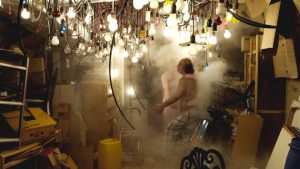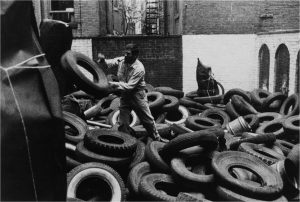ARTISTIC DEVELOPMENT
For the moment I chose to work on this project alone, I decided to seek for my inner peace because it is the only way for me to gain the courage to understand the outside world.
After a long time of struggle, I eventually manage to collect the answer. There are three most important things I need to do to relief my anxiety and depression.
1.Keep hoping.
2.Accept to be ordinary.
3.Self-Forgiveness.
To showcase the development of my mental journey towards this answer. I create a narrative as a form of poem initially.
ARTISTIC STATEMENT
Here is the poem,also my artistic statement:Three Things
First,
breathe with your hope,
when the sun rises every morning.
Let it go,
a handful of regret.
Have a slice of bread,
to swallow your anxiety.
Don’t worry.
No one has passed your future,
or stopped at your presence.
Second,
Don’t fight against your mediocre.
You’ve wasted your adolescence so
be true to yourself.
Indeed,
We all are the same.
We all under the same
the same sun.
Third,
Have a long conversation with yourself.
Record the feelings left in your life.
The world won’t change for you anymore,
Be isolated,
or fuse into it.
If you feel helpless,
lift your arms
and hug yourself.
Artist Research
As for the first and second projects, I explore video and sound art respectively. Hence for the final project, I decide to boldly exhibit in the form of performance art.
I have done some researches on several excellent performance artists as well as their skills and practices in their works.
Tino Sehgal
A British–German artist who describes his work as “constructed situations.” He is also thought of as a choreographer that makes a dance for the museum setting. He uses the raw materials of voice, language, and movement to build pieces of art. For “This Progress” (2010), he filled the rotunda of the Guggenheim with a corps of “interpreters”—children, teenagers, baby boomers, octogenarians—who, according to a set of rules devised by Sehgal, engaged each visitor in a conversation, delivering him to progressively older interlocutors as he spiralled up the museum’s ramp.
The piece, which made intimates of strangers, was exhilarating. “This Progress” reflected Sehgal’s desire to redefine art as the transformation of actions rather than of things. “What my work is about is, Can something that is not an inanimate object be considered valuable?” Sehgal said recently. He is, in a sense, an architect of interaction. His works are collaborations, new builds on human turf.
His art is ephemeral. Moreover, he forbids the creation of any of the by-products—photographs, videos, catalogs, wall text—that normally derive from work. His pieces leave no physical residue. To see one, you have to either visit the museum or consult a tertiary report.
Tris Vonna-Michell
A British artist who performs narratives and constructs installations through the layering of these narratives, photographs, and mementos, presented using antiquated technologies and slide projection.
Here are the collection of his arts
http://www.t293.it/artists/tris-vonna-michell/
A performance cycle – Tris Vonna-Michell, 2010
He performed a sense of time and history in ceaseless talking and bring an illusion for the audience as if they travel back to another time and space with the performer. In this performance, Tris Vonna-Michell kept high concentration all along as if he is no long a person, but a record machine that is playing the records of the performer’s past.
Terence Koh
A Canadian artist whose work spans a range of media, including drawing, sculpture, video, performance, and the internet. Originally working under the alias Asian punk boy, Koh designed zines and custom-made books. His recent work has expanded to include durational performances, MacQueen, Kathleen (March 15, 2011). “Shifting Connections: Terence Koh.”
http://bombmagazine.org/article/4959/
Koh’s work has been associated with New Gothic Art. In nothing to doo, his first solo show at the Mary Boone Gallery, Koh, “dressed in white pajamalike clothes, slowly circl[es] a beautiful cone-shaped pile of rocky solar salt — 8 feet high and 24 feet across — on his knees.” So Roberta Smith described the work in an appreciative March 2011, review. “This is performance art reduced to a bare and relentless rite in a space that has been stripped down to a kind of temple. (Its regal proportions help.) … Maybe the work is an extended apology for past bad-boy behavior.”
Complex installations, and the exploration of natural ecosystems. “An Art World Provocateur Returns to New York With an Unexpected Subject: Bees”
https://www.nytimes.com/2016/05/25/t-magazine/art/terence-koh-bee-chapel.html?_r=0
Much of his diverse work involves queer, punk, and pornographic sensibilities. In 2008, he was listed in Out magazine’s “Out 100 People of the Year”.
Process:
For the soundscape created for my performance art, It not only serves as an acoustic stimulation to bring the audience into other spaces but creates situations for the narrative.
I inherit the idea from my project to which transit from the indoor situation into the outdoor environment. Through reacting with the sound transition, it symbolizes how do I interact with the local community as a new immigrant from another social background. The meaning can be further developed into reflecting people like me: foreign students who live and study in Singapore. To explore how they struggle to rebuild their social circle as well as adapt to new cultures.
For the performance, I purposely recorded at the late night to capture my authentic state. I suffer from insomnia for quite a long period and only late night can bring me peace and concentration to be true to myself.
Reflection
Video recording and editing is always my weakness, but through the learning process of this Semester, I strive to learn new skills as well as explore many artistic ideas for future development. For me, 4D art is previously obscure to appreciate, but now I can understand the concept behind the art. Perhaps in future, I can still have the opportunity to create more sound and video art to enhance my skills.










